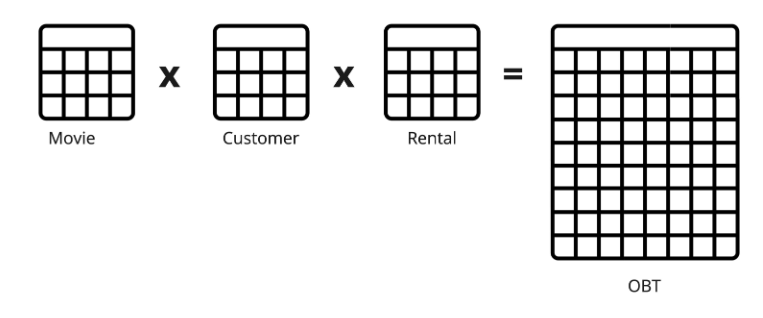Introduction
The concept of One Big Table (OBT) is gaining traction in modern data engineering for its simplicity and performance benefits. OBT consolidates all data into a single, massive table, eliminating the need for complex joins. While this approach simplifies querying and accelerates data access, it comes with certain trade-offs. In this post, we’ll explore the advantages and challenges of adopting the OBT model in data engineering.

Advantages of One Big Table in Data Engineering
The OBT approach simplifies data structures by consolidating information into one large table, making it an attractive choice for certain use cases.
1. Simplified Querying
- Eliminates the need for joins, resulting in faster query execution.
- Ideal for analysts or teams requiring quick, straightforward access to data.
2. Enhanced Query Performance
- Modern columnar storage formats (e.g., Parquet, ORC) reduce the impact of table size.
- Queries only scan relevant columns, not the entire dataset.
3. Reduced Development Complexity
- Simplifies schema design and reduces time spent on maintaining relationships between tables.
4. Easier Maintenance
- Minimizes the need to troubleshoot join-related performance issues.
Trade-offs of the OBT Approach

Despite its advantages, OBT is not without challenges:
- Increased Storage Costs: Data redundancy in OBT leads to higher storage requirements.
- Update Complexity: Writing or updating data is harder compared to normalized schemas.
- Limited Scalability: Not suitable for scenarios requiring frequent, large-scale updates.
For a balanced perspective, explore our guide on Dimensional Modeling vs. OBT .
The One Big Table approach offers simplicity and speed, making it a viable option for analytics-focused workloads. However, its redundancy and update complexities make it less suited for transactional systems. Businesses must weigh these trade-offs against their specific needs to determine if OBT is the right choice. Start by assessing your current data workflows and experiment with OBT for reporting scenarios.


